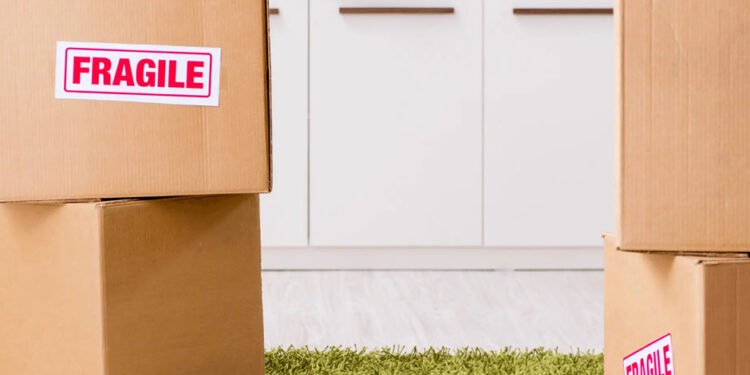Moving can be stressful, especially when it comes to packing and transporting delicate items. From glassware and artwork to electronics and family heirlooms, taking extra precautions is crucial to ensure nothing breaks during the transition. Fortunately, with the right strategies, you can move even the most fragile belongings with peace of mind. This guide will walk you through essential steps to pack and move fragile items long distances safely and effectively. Let’s dive into some best practices that will help keep your valuables secure.
Invest in Quality Packing Supplies
The first step to moving fragile items safely is investing in high-quality packing supplies. Using sturdy cardboard boxes, bubble wrap, packing peanuts, and heavy-duty tape makes a significant difference. Double-walled boxes provide extra strength, ideal for glassware, dishes, and ceramics. It’s also wise to use protective foam sleeves for stemware or mirrors. Skimping on packing materials may seem economical, but it could end up costing more if items are damaged.
When packing your belongings, don’t forget to consider cushioning. The goal is to minimize movement within the box, so filling empty spaces with padding is essential. Wrapping each item individually with bubble wrap or packing paper provides an extra layer of protection. Also, be sure to use boxes of the appropriate size; oversized boxes can lead to shifting, which increases the risk of damage. Finally, remember to label each box clearly as “fragile” to ensure movers handle it with care.
Master the Art of Wrapping
The way you wrap fragile items can be a game-changer in preventing damage. Start by wrapping each piece individually, using multiple layers if necessary. For glass items, apply a layer of packing paper first to avoid bubble wrap imprints, then add bubble wrap for additional cushioning. Plates and bowls should be wrapped and stacked vertically, similar to how they sit in a dishwasher, which reduces the risk of breakage. For odd-shaped or particularly delicate items, using foam or crumpled paper to fill gaps can prevent shifting.
When it comes to electronics, wrapping with anti-static materials is essential to avoid damaging sensitive components. TVs and monitors should be packed in their original boxes if available, or in specialty boxes with custom foam inserts. For artwork and mirrors, use corner protectors and cardboard sheets to safeguard the frames and glass surfaces. Wrapping should be tight but not too tight; excessive pressure could damage the items instead of protecting them.
Pack Smart, Pack Safe
Strategic packing within boxes can make a significant difference in how well your fragile items withstand a move. Always place heavier items at the bottom of the box and lighter, more delicate pieces on top. This distribution helps keep everything stable and reduces the risk of items crushing each other. For extra security, consider layering the bottom and sides of the box with a thick cushion of packing material, such as towels or crumpled newspaper.
Once the items are packed, give the box a gentle shake. If you hear movement, it means you need more padding. Consider adding additional material around each item to ensure a snug fit. For extremely fragile or valuable items, double-boxing can provide added protection. In this method, you pack the item in one box and then place that box inside a slightly larger one, using more padding to fill the space between the boxes.
Use the Right Moving Techniques
Even the best-packed boxes can be compromised if mishandled during the move. Whether you are hiring professional movers or doing it yourself, proper lifting and moving techniques are essential. Always lift with your legs, not your back, and use a dolly or moving straps for heavy boxes. Avoid stacking fragile boxes beneath heavier ones, as this can lead to crushing or toppling.
Transporting fragile items in your own vehicle rather than the moving truck is another option to consider. For items that require extra care, like heirlooms or expensive electronics, this method allows you to keep a closer eye on them. If you choose this route, ensure they are well-secured and avoid sudden stops or sharp turns. Communication with movers is also key; let them know which boxes are especially delicate so they handle them with extra caution.
Unpack with Care
The process of unpacking is just as important as packing when it comes to keeping your items safe. Take your time and unpack one box at a time, starting with the most fragile items. Use scissors or a box cutter carefully to avoid damaging the contents. Unwrap each item slowly, and double-check for any signs of damage before discarding the packing materials. If you notice any broken items, document the damage for potential insurance claims.
After unpacking, you can reuse or recycle packing materials like bubble wrap and boxes to minimize waste. If you have hired a moving company, inspect your items before they leave to report any issues immediately. Taking your time and being thorough during the unpacking process will help ensure that everything arrives in one piece. The key is to remain patient and avoid rushing, even if you’re eager to get settled.
Plan and Execute with Precision
Moving fragile items without damage requires careful planning, high-quality materials, and thoughtful execution. By taking the time to wrap, pack, and handle each item properly, you can significantly reduce the risk of breakage. Remember, moving is not just about transporting belongings; it’s about safeguarding memories and investments. Implementing these strategies will make your move smoother and stress-free. With the right approach, you can transition to your new home with all your cherished items intact.












